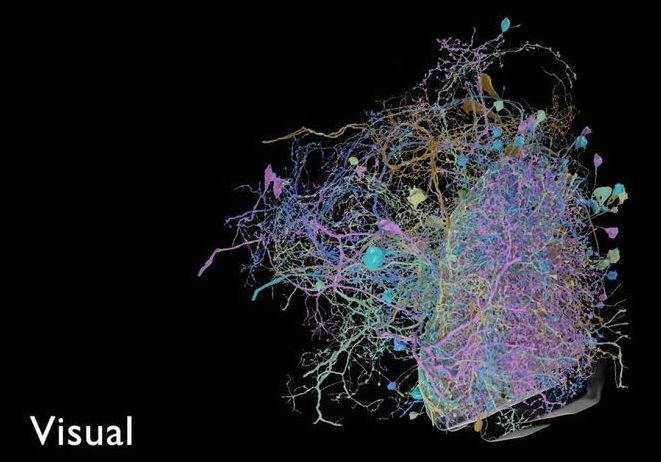Jan 23, 2020
This Google Scientist teaches AI to build better AI
Posted by Genevieve Klien in category: robotics/AI
TDS interviews AI visionary on her cutting-edge research at Google Brain, how Deep Reinforcement Learning works, and more.
TDS interviews AI visionary on her cutting-edge research at Google Brain, how Deep Reinforcement Learning works, and more.
Footprints on an extinct Italian volcano suggest ancient humans were regular visitors, and the shapes of the tracks point to the identity of the trackmakers.

Scientists from Google and the Janelia Research Campus in Virginia have published the largest high-resolution map of brain connectivity in any animal, sharing a 3D model that traces 20 million synapses connecting some 25,000 neurons in the brain of a fruit fly.
The model is a milestone in the field of connectomics, which uses detailed imaging techniques to map the physical pathways of the brain. This map, known as a “connectome,” covers roughly one-third of the fruit fly’s brain. To date, only a single organism, the roundworm C. elegans, has had its brain completely mapped in this way.
Continue reading “Google publishes largest ever high-resolution map of brain connectivity” »
WASHINGTON — DirecTV is racing to move its Spaceway-1 satellite out of the geostationary arc after the 15-year-old satellite suffered a crippling battery malfunction that the company fears could cause it to explode.
DirecTV told the U.S. Federal Communications Commission that it does not have time to deplete the remaining fuel on Spaceway-1 before disposing of it by boosting it 300 kilometers above the geostationary arc, a region home to most of the world’s large communications satellites.
Spaceway-1 is a Boeing-built High Power 702 model satellite that was designed to last 12 years. Launched in 2005 on a Sea Launch Zenit 3SL rocket, the 6,080-kilogram satellite originally provided high-definition television direct broadcasting services from its orbital slot at 102.8 degrees west longitude. More recently, Spaceway-1 was being used to backup Ka-band capacity over Alaska.
Circa 2016
Physics students at the University of Leicester have boldly gone where no student has gone before – by calculating one way to potentially build photon torpedoes seen in the Star Trek universe.
Announced to coincide with the release of Star Trek: Beyond, which opens in UK and US cinemas on 22 July, the students’ findings suggest that in order to function correctly, a photon torpedo could be made out of heavy metals such as lead or uranium, as metals with fewer protons would not have the necessary cascade length.
The students presented their findings in a short article for the Journal of Physics Special Topics, a peer-reviewed student journal run by the University’s Department of Physics and Astronomy. The student-run journal is designed to give students practical experience of writing, editing, publishing and reviewing scientific papers.
Circa 2002
This paper proposes a new concept for generating controlled, high-flux pulses of neutrinos. Laser-induced generation of relativistic protons, followed by pion production and decay, provides the neutrino source. By conservative estimate, the source will yield nanosecond-range pulses of muon–neutrinos, with fluxes of ~1019 νμ s−1 sr−1 and energies of ~20 MeV or higher. Concept feasibility depends upon further progress in high-intensity lasers; the process assumes a driving laser with pulse energy ~8 kJ, providing an irradiance of ~9 × 1022 W cm−2. The study of the KARMEN time anomaly and neutrino oscillations would be the possible applications of the source.
Export citation and abstract BibTeX RIS.
The Tasmanian devil (Sarcophilus harrisii), the largest marsupial carnivore, is endangered due to a transmissible facial cancer spread by direct transfer of living cancer cells through biting. Here we describe the sequencing, assembly, and annotation of the Tasmanian devil genome and whole-genome sequences for two geographically distant subclones of the cancer. Genomic analysis suggests that the cancer first arose from a female Tasmanian devil and that the clone has subsequently genetically diverged during its spread across Tasmania. The devil cancer genome contains more than 17,000 somatic base substitution mutations and bears the imprint of a distinct mutational process. Genotyping of somatic mutations in 104 geographically and temporally distributed Tasmanian devil tumors reveals the pattern of evolution and spread of this parasitic clonal lineage, with evidence of a selective sweep in one geographical area and persistence of parallel lineages in other populations.
Circa 2013
In a feat of “molecular time travel,” the researchers resurrected and analyzed the functions of the ancestors of genes that play key roles in modern human reproduction, development, immunity and cancer. By re-creating the same DNA changes that occurred during those genes’ ancient history, the team showed that two mutations set the stage for hormones like estrogen, testosterone and cortisol to take on their crucial present-day roles.
“Changes in just two letters of the genetic code in our deep evolutionary past caused a massive shift in the function of one protein and set in motion the evolution of our present-day hormonal and reproductive systems,” said Joe Thornton, PhD, professor of human genetics and ecology & evolution at the University of Chicago, who led the study.
“If those two mutations had not happened, our bodies today would have to use different mechanisms to regulate pregnancy, libido, the response to stress, kidney function, inflammation, and the development of male and female characteristics at puberty,” Thornton said.
